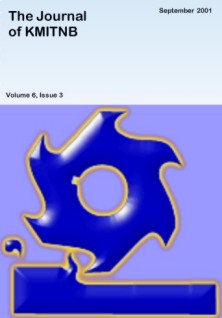ThaiScience
ThaiScience
THE JOURNAL OF KMUTNB
Volume 32, No. 02, Month APRIL, Year 2022, Pages 285 - 295
The comparison of welding polarities on microstructures and wear behaviour of hardfacing metal using submerged arc welding with added metal powder
Buntoeng Srikarun, Prapas Muangjunburee
Abstract Download PDF
The objective of this research is to compare the types of welding polarities between direct current electrode positive (DCEP) and alternating current (AC) that affect the metallurgical and mechanical properties of martensitic weld deposits onto a low chromium alloy steel. The welding conditions can be divided into 1 layer and 3 layers using DCEP and AC welded by submerge arc welding with metal powder addition. Then, the chemical composition, macrostructure, and microstructure of the deposited layers were studied. Hardness and wear testing for mechanical properties and worn surface characteristics of the hardfaced deposits were examined as well. The results showed that the deposited layer using AC polarity was thicker than that using DECP polarity. The microstructure of the deposited layer for all welding conditions consisted of martensite and austenite. The worn mechanisms of the hardfaced surfaces were mainly cutting and plowing. Hardfacing with AC polarity led to less dilution than that with DCEP polarity. As a result, the deposited microstructure using AC polarity contained higher martensite phase resulting in higher hardness and wear resistance. Therefore, AC polarity is more suitable for hardfacing application than DCEP polarity.
Keywords
Hardfacing; Welding Polarity; Submerged Arc Welding; Powder Addition; WearTHE JOURNAL OF KMUTNB
Published by : King Mongkut's University of Technology North Bangkok
Contributions welcome at : http://www.journal.kmutnb.ac.th
